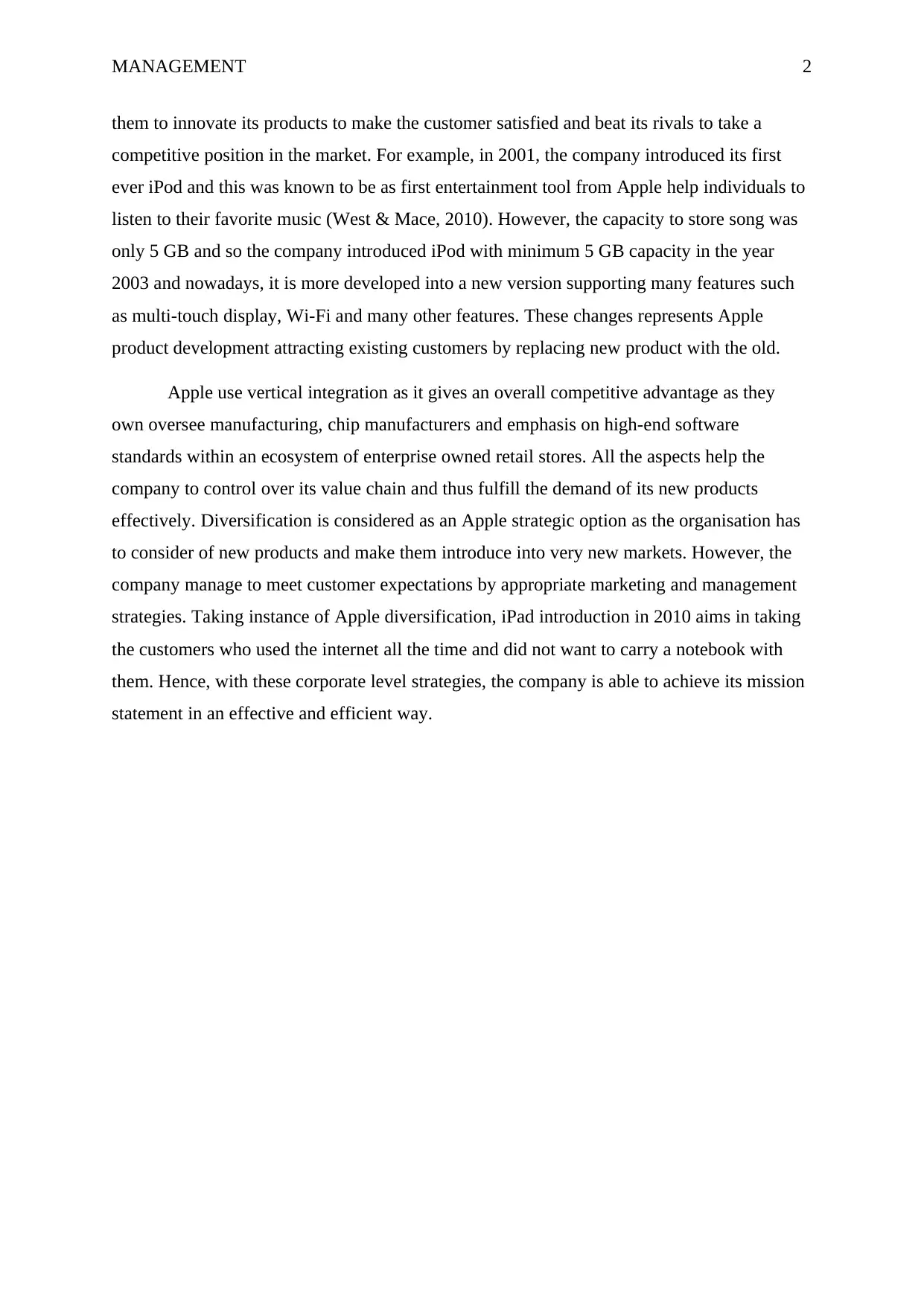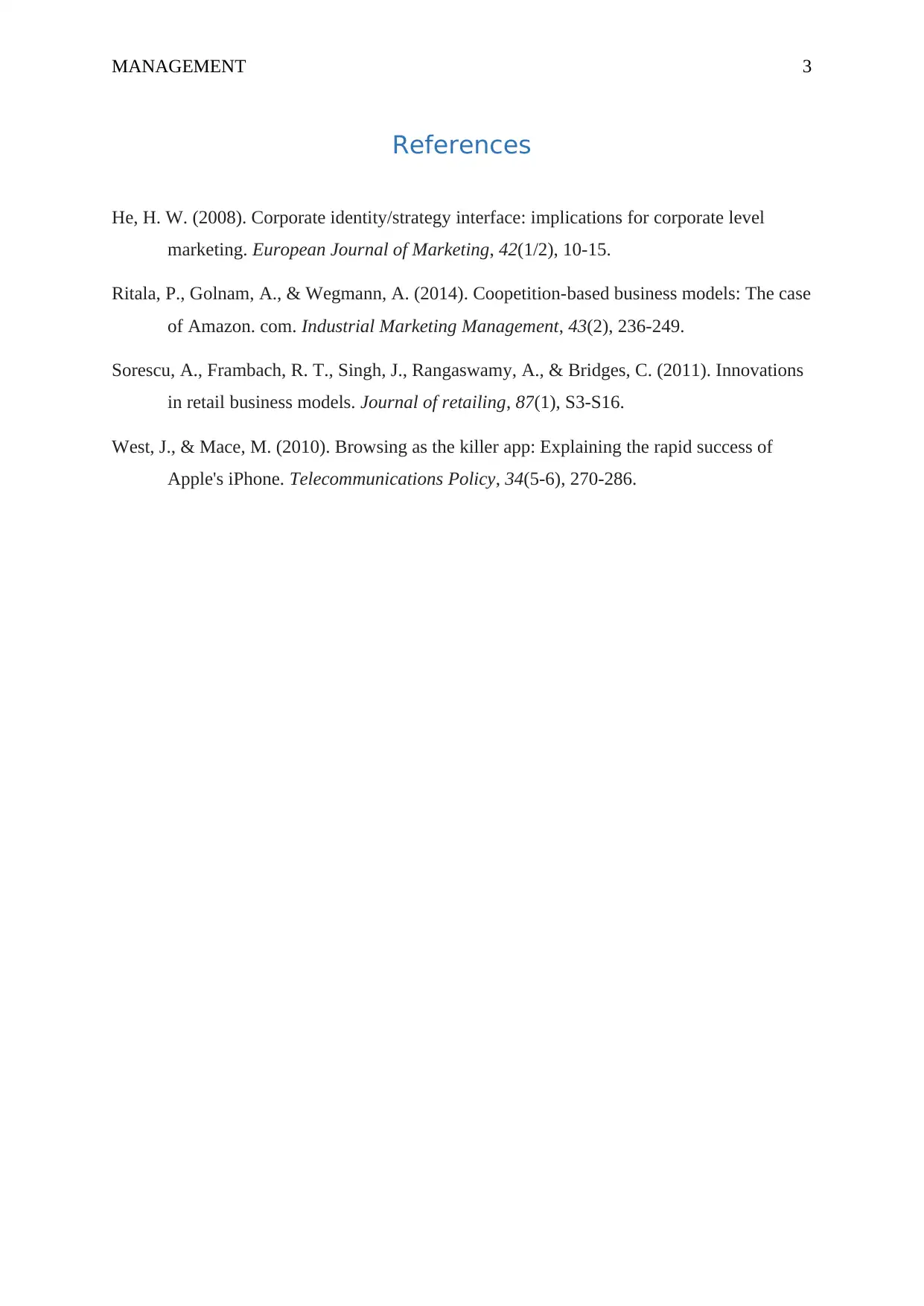Apple's Corporate Level Strategy Analysis: A Strategic Overview
VerifiedAdded on 2022/11/18
|4
|891
|203
Report
AI Summary
This report provides a detailed analysis of Apple's corporate-level strategy, examining its approach to market and product development, diversification, and competitive advantages. The analysis begins by defining corporate strategy and its importance in shaping the company's future. It explores Apple's emphasis on innovation, particularly through corporate classical innovation, internal processes, and merchandise innovation, as a means of maintaining its competitive edge. The report delves into Apple's core competencies, such as its technology and innovative designs, and how these are leveraged across its diverse product lines. It identifies Apple as a Dominant Business type of diversification and traces its market penetration and strategic decisions. The report further examines Apple's use of both market and product development strategies, including its approaches to entering new geographic markets and introducing new products to existing consumers. It also explores Apple's use of vertical integration to gain a competitive advantage and control over its value chain. The report concludes by highlighting how Apple's corporate-level strategies enable the company to achieve its mission statement effectively.
1 out of 4











![[object Object]](/_next/static/media/star-bottom.7253800d.svg)